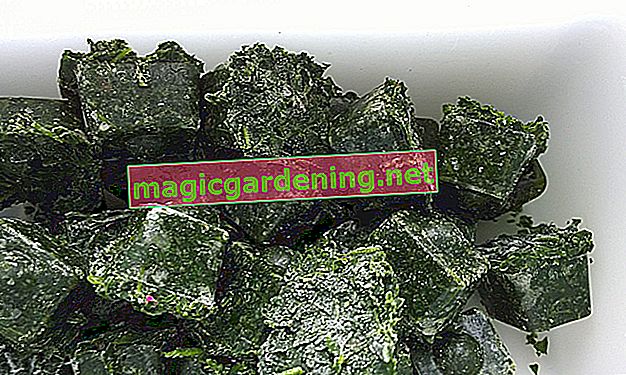
Preferred areas
You can come across chickweed anywhere: in the great outdoors, in a vegetable patch or even in the lawn. While it is usually allowed to thrive undisturbed in nature, it is fought on private land. What a pity. With its ingredients, the herb surpasses many a head of lettuce. Chickweed salad tastes mild and tasty. So grab it next time, but get to know it well first. There is a risk of confusion.
also read
- Good Heinrich - there is a risk of confusion when collecting!
- Chickweed - these are the characteristics that you can recognize as weeds
- Chickweed - powerful seeds in abundance
The typical features
- approx. 40 cm high
- Plant spreads like a carpet
- Stem is soft, round and thin
- a so-called hairline is visible on it
- Leaves are small, are max. 3 cm long
- they are oval and pointed
- Flowers are simple and white
- only a few millimeters tall
- Flowering period: May to October
Other species of mire
Chickweed can easily be confused with other chickweed. For example with the chickweed. This is just as delicate and just as white-flowering as the popular chickweed. If you accidentally pick them, you do not have to fear poisoning. However, it is not as tasty as its relative.
Similar wild herbs
There are also other wild herbs that are very similar to chickweed. They don't grow in all locations where chickweed thrives. But in one or the other region or place, a direct neighborhood can certainly occur. First would be the water intestine and
to name the salvation of field gas.
The water intestine is an edible wild plant. Mixing it up with it does not pose a threat to the inexperienced collector, even if he eats it in large quantities.
It looks different with the Ackergauchheil. Inside it contains poisonous saponins. It is therefore considered to be slightly toxic. As a rule, the consumption of this wild plant is completely discouraged. Only here and there can you hear a voice that considers small amounts to be harmless.
Safe differentiator
You can easily tell the chickweed chickweed from the dairy farm during its heyday. While the chickweed blooms white, the Ackergauchheil adorns itself with orange flowers. Otherwise, another distinguishing feature can help us with which the chickweed can be distinguished from the other doppelgangers: the hairline.
Many do not form this so-called hairline. They show up close together, but only on one side of the stem. Lined up like this, they form a line that extends the entire length of the stem.
Tips
Hold a stem up to the light, it will make it much easier to spot the fine hairline.








